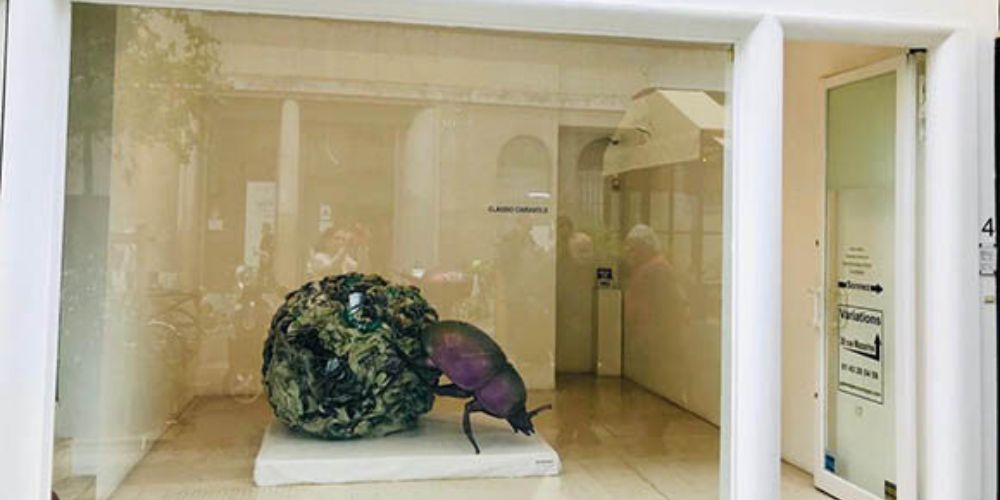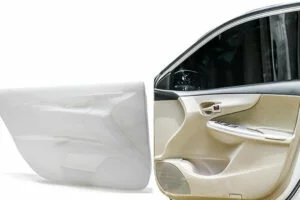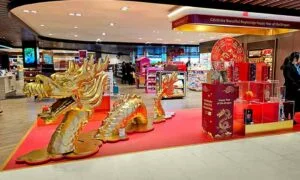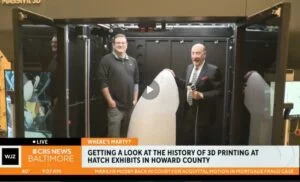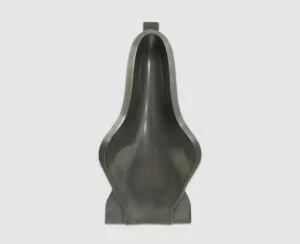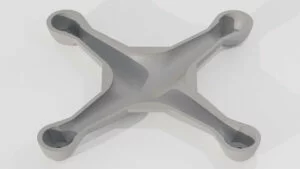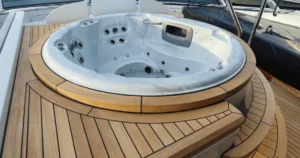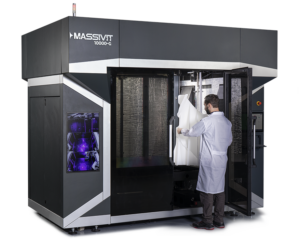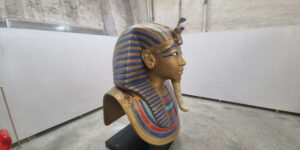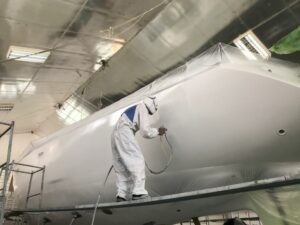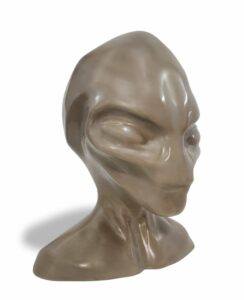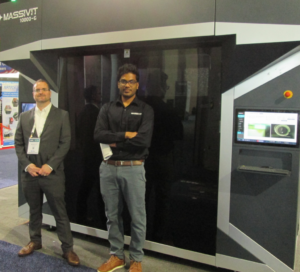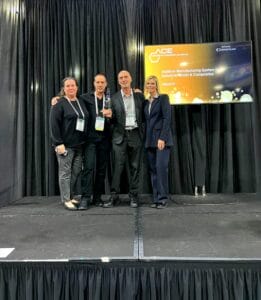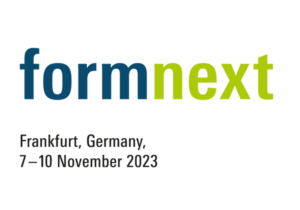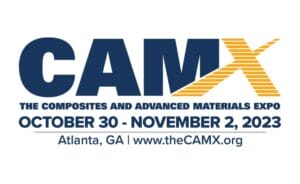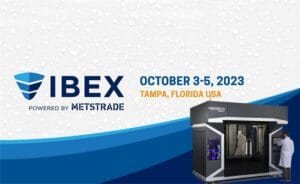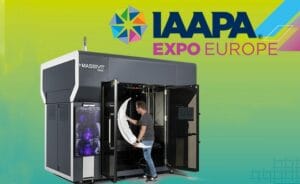Behind the scenes, a lot of expertise, creativity and hard work is needed for each and every display. They are created by highly-skilled professionals who have spent years honing their craft. For them, coming up with a great museum exhibit design and then seeing it through to final production is incredibly fulfilling, although often fraught with the pressure of meeting deadlines that cannot be shifted. There’s even a specialty MA degree in exhibition design now offered at George Washington University.
The truth is, print shops and prop makers claim that there has been increasing interest for large-format 3D printing from museums and galleries. Artists are turning to 3D printing, too. Here is Claudio Ciaravolo’s piece being produced by Sisma Italia on the Massivit 1800 and then showcased in Italy.
There are numerous advantages that 3D printing brings, specifically the ability to fabricate one-off projects at a reasonable cost, significantly reduced turnover times compared with traditional fabrication processes, and new realms in terms of creative freedom.
Turning a curator’s or designer’s vision into a reality can no doubt be challenging. So how does one go about building a great museum exhibit? We dove into the topic ourselves, and here’s what we found.
Phase 1: The Concept and Vision
A display or exhibit can be about science, history, art, or archeology. Yet the implementation and form need to be geared towards a designated target audience and age group. Thought must also be given to the required level of interactivity. How can you best engage with the personas that the museum aims to reach out to?
In the case of this 10-foot (3-meter) tall dinosaur, the aim of the museum was to attract train commuters to a new paleontology exhibition at the Musée National d’Histoire Naturelle in Paris. It was decided to start promoting it at the closest train station. Looking for a way to produce a life-size Triceratops with authentic, intricate scales and features, the museum turned to large format 3D printing to create this massive beast. It was so effective and realistic that it caught the eye of all passersby. Print shop, Metropole, used the size of their Massivit printer to their advantage for this undertaking, and the resulting authenticity demonstrated that any finish is truly possible, in this case, bringing an extinct species to life.
Composite Images 3D printed a dinosaur as well.
Making an exhibit interactive or dynamic in some way generally leaves a far greater impact on visitors. Lights, illumination, sensor triggers, or augmented reality features are sensory mainstays. They appeal to any audience and can effectively draw visitors’ attention to a particular part of an exhibit at a particular moment.
Large 3D printed displays can easily integrate interactive features. So it’s important to take these capabilities into account when designing or creating a museum exhibit.
Assuming the storyline, background context, and educational content have been defined, any featured animal, prop, or setting can be fabricated digitally, meaning the end result will precisely replicate the design. Today’s technology means you can either scan a physical object with a 3D scanner or design it from scratch in CAD software such as ZBrush or Rhino. What you see on the screen is what emerges straight out of the 3D printer, within hours.

3D printed by Sismaitalia
Making an exhibit interactive or dynamic in some way generally leaves a far greater impact on visitors. Lights, illumination, sensor triggers, or augmented reality features are sensory mainstays that appeal to any audience and can effectively draw visitors’ attention to a particular part of an exhibit at a particular moment. Large 3D printed displays can easily integrate interactive features, so it’s important to take these capabilities into account when designing or creating a museum exhibit.
Phase 2: Production
One of the key reasons why it has become popular to create museum exhibits with large format 3D printers like the Massivit 1800, is the speed at which projects can be delivered, from design through implementation. Being that fabricators are regularly presented with short deadlines, large 3D printers are often the only realistic option.
Phase 3: Installation and Logistics
Another big advantage to using a Massivit large format 3D printer is that the parts are 3D printed hollow. From the start, they are light and yet strong. This helps with transportation and logistical considerations. It also allows for last-minute changes in the final context, as parts can easily be moved around. Producing hollow models and displays also enables more control over the degree of internal illumination.
Phase 4: The Unveiling
Once your clients know they’re able to incorporate an augmented reality app or social media hashtags into their visitors’ journey, they’re sure to want to leverage these marketing and engagement tactics, so it’s important to expose them to it at the start.
These features can also be planned for the launch of the museum exhibit to attract more visitors. Your job is to ensure your potential clients know the full range of creative possibilities and that you are fully equipped to hit their deadlines.
To find out more about how large format 3D printing is helping print shops win projects across multiple verticals, contact Massivit 3D for a chat. To read more, scroll down.


